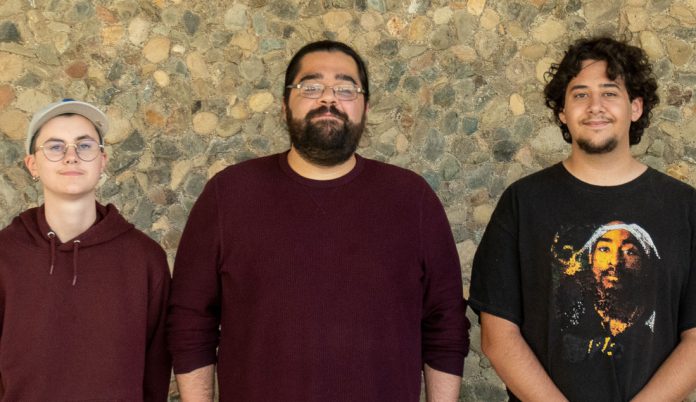
Student workers at Gavilan College are organizing what they say would be the first student workers union at a community college in California, aiming to address wage disparities and improve working conditions at their Gilroy and Hollister campuses, and inspire other students to follow their example across the state’s 116 community college campuses.
Payam Barghi, a 31-year-old political science major and peer tutor, is leading the effort alongside four other student organizers that comprise their organizing committee. Their campaign has already secured a 17% pay raise for all student workers and guaranteed free parking permits through negotiations with the administration.
“If we’re being told that we’re an integral part of the academic process on this campus, how vital we are, how necessary we are, and then when we collect our check and we’re making minimum wage, there’s a gap there,” Barghi said.
The organizing committee began meeting in fall 2024 after identifying what they called “equity gaps” affecting the college’s approximately 70 to 80 student workers. While California’s fast food workers earn $20 per hour minimum wage, student workers at Gavilan were starting at the state minimum wage of $16.50 per hour.
Student workers at Gavilan perform various roles across campus, including peer tutoring, academic mentoring, administrative work in financial aid and business offices and serving as liaisons between incoming students and campus resources. Many work in the college’s writing center, STEM center and math lab.
“The student workers on our campus have never had a voice,” said Jessica Gatewood, an English teacher at Gavilan who serves as lead faculty negotiator for the faculty union. “Everything was always just decided at higher levels.”
Gatewood noted that student workers occupy a unique position on campus, being employees of the college who don’t fit into existing faculty or classified staff unions, leaving them without representation despite doing educational work.
Barghi cited the efforts of student workers at California State University campuses successfully forming their own unions as a major inspiration for the push to do the same for Gavilan student workers.
To form their union, the organizers must collect signatures from more than half the student workers, then file with the state Public Employment Relations Board for an election. If successful, they would begin collective bargaining with the administration.
“We have to meet them where they’re at,” Barghi said of recruitment efforts. “We have to show that we actually do care about them.”
The committee has conducted anonymous surveys and face-to-face conversations to identify priorities. According to Barghi, student workers are seeking job security protections, mental health time off and sick pay that aligns with their work schedules. Currently, student workers earn one hour of sick time for every 30 hours worked, but are limited to 20 hours per week maximum, resulting in slow accumulation of sick days for when an illness should strike.
“The last thing you want when you’re having a [mental health] moment is that you’re losing out on money, because then it just compounds,” Barghi said.
Despite not yet having completed their work to form a union, organizers have already won several important victories in their efforts to improve working conditions for Gav students. In addition to the 17% raise implemented July 1, the college provided a one-time stipend to address immediate economic needs of their student workers, and guaranteed free parking when the college resumes charging for permits, Barghi said.
“We’re really thankful to the administration for doing that, because they didn’t need to,” he said. “That’s what makes me really hopeful that we can get something done here at Gavilan.”
The organizers have broader ambitions beyond their campus. They hope to create a blueprint that other community colleges across California can follow.
“We think they all could benefit from having representation in the workplace,” Barghi said. “Once we create this blueprint for them, we hope that they will reach out, ask for help, or be inspired to take it upon themselves to organize their own unions.”
The organizing committee plans to continue meeting with student workers across Gavilan’s campuses to build support for union authorization. They emphasize creating a sustainable system that will advocate for student workers even after the movement’s current organizers graduate and move on.
“The economic needs of student workers changes over time,” Barghi said. “And if we create this organized body of advocacy and accountability, when I’m not here, when the organizing committee’s not here, there will be a system in place to go back to the bargaining table and advocate for changes that make sense for that time.
“It’s integral for present students and future students.”













